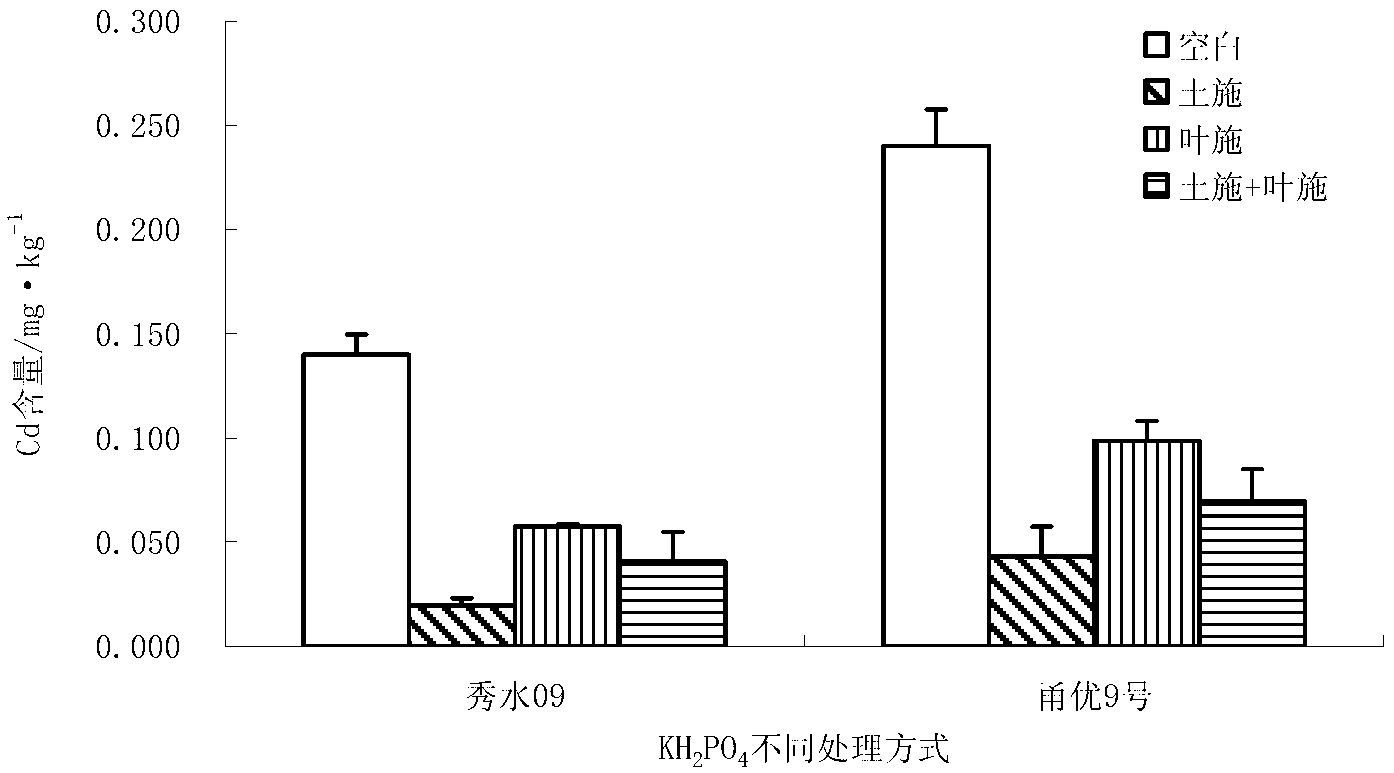Application of monopotassium phosphate to reduce rice cadmium accumulation
A technology of potassium dihydrogen phosphate and heavy metals, which is applied in the fields of application, rice cultivation, gardening, etc., and can solve the problems of increased labor costs, multiple applications, and large dosage adjustments, and achieves simple application methods, reduced application amounts, and cadmium control. cumulative effect
- Summary
- Abstract
- Description
- Claims
- Application Information
AI Technical Summary
Problems solved by technology
Method used
Image
Examples
Embodiment 1
[0033] Potassium dihydrogen phosphate is applied by soil application.
[0034] (1) Fully dissolve potassium dihydrogen phosphate in water, and apply potassium dihydrogen phosphate solution to the soil when the rice seedlings are prepared before transplanting, and the application rate of potassium dihydrogen phosphate is 38.3 kg / ha;
[0035] (2) After fully mixing the potassium dihydrogen phosphate solution with the soil, the rice seedlings are transplanted, and the conventional field management methods are used for management throughout the rice growth period.
Embodiment 2
[0037] Potassium dihydrogen phosphate was applied by foliar spraying.
[0038] (1) Transplanting rice seedlings after site preparation;
[0039] (2) Prepare potassium dihydrogen phosphate into an aqueous solution with a concentration of 5.52 kg / m3, and use a sprayer on the 15th day after rice transplanting, the 6th day at the jointing stage, the 2nd day at the flowering stage, and the 15th day after the flowering stage. Potassium dihydrogen phosphate solution was sprayed on the leaves, and the spraying rate was 13.9 cubic meters per hectare. If it rains, it will be postponed. The entire growth period of rice is managed by conventional field management.
Embodiment 3
[0041] Apply potassium dihydrogen phosphate in combination with soil application and foliar spray.
[0042] (1) Fully dissolve potassium dihydrogen phosphate in water, and apply potassium dihydrogen phosphate solution to the soil when the rice seedlings are prepared before transplanting, and the application rate of potassium dihydrogen phosphate is 38.3 kg / ha;
[0043] (2) After fully mixing the potassium dihydrogen phosphate solution with the soil, transplant rice seedlings;
[0044] (3) On the 15th day after rice transplanting, the 6th day of the jointing stage, the 2nd day of the flowering stage, and the 15th day after the flowering stage, spray the potassium dihydrogen phosphate solution on the leaves with a sprayer, and the spraying amount is 13.9 cubic meters m / ha, the concentration of potassium dihydrogen phosphate is 5.52 kg / m3, if it rains, it will be postponed, and the whole growth period of rice will be managed by conventional field management.
[0045] Result detect...
PUM
 Login to View More
Login to View More Abstract
Description
Claims
Application Information
 Login to View More
Login to View More - R&D
- Intellectual Property
- Life Sciences
- Materials
- Tech Scout
- Unparalleled Data Quality
- Higher Quality Content
- 60% Fewer Hallucinations
Browse by: Latest US Patents, China's latest patents, Technical Efficacy Thesaurus, Application Domain, Technology Topic, Popular Technical Reports.
© 2025 PatSnap. All rights reserved.Legal|Privacy policy|Modern Slavery Act Transparency Statement|Sitemap|About US| Contact US: help@patsnap.com



